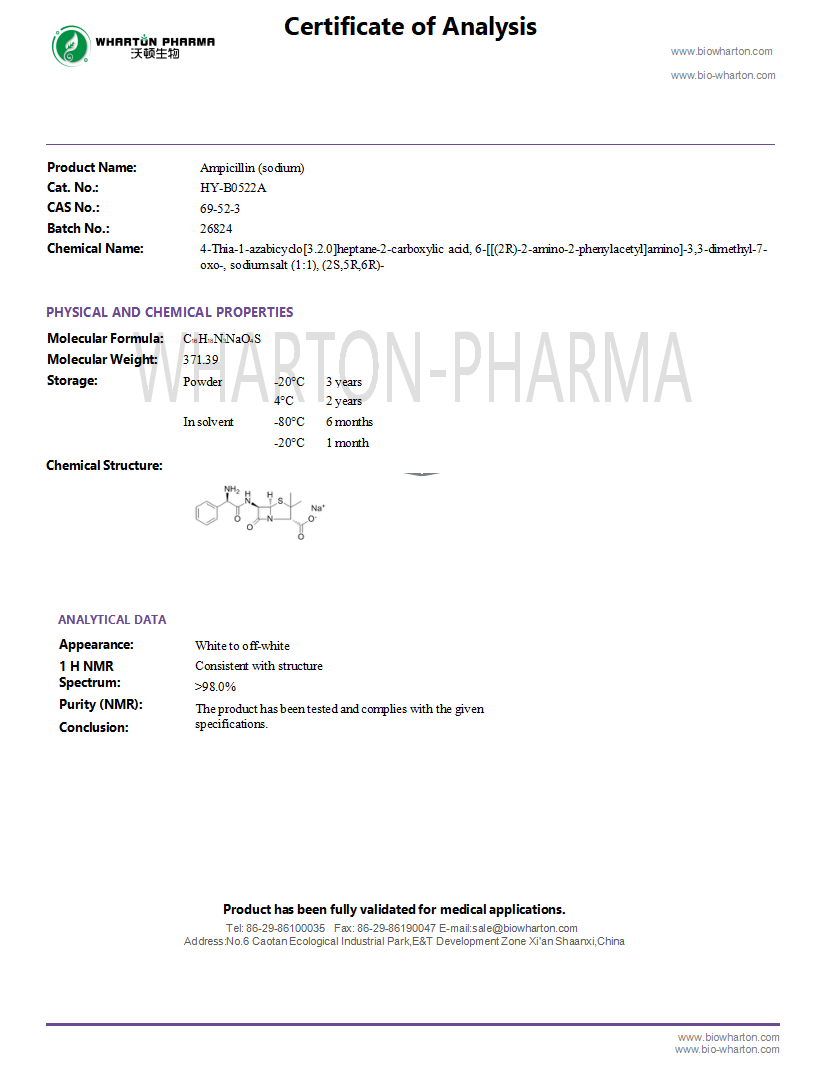
| Description | Ampicillin sodium is a broad-spectrum beta-lactam antibiotic against a variety of gram-positive and gram-negative bacteria. | ||||||||||||||||
| In Vitro | Ampicillin inhibits the growth of E. coli of swine origin in a dose-dependent manner. The effective inhibitory concentration of Ampicillin was 2.5 uG/mL[1]. | ||||||||||||||||
| In Vivo | Ampicillin is very effective in alleviating the symptoms of hemorrhagic enteritis in a 11-week old pig[1]. Ampicillin produces maximum concentrations in bile twice as high as in serum. The peak concentration of ampicillin after an oral dose is as twice as high in portal blood as in peripheral blood[2]. Ampicillin provides neuroprotection against ischemia-reperfusion brain injury. Ampicillin reduces the activities of MMPs and increases the expression level of GLT-1. Pretreatment with ampicillin significantly reduces medial hippocampal cell death following global forebrain ischemia[3]. | ||||||||||||||||
| Preparing Stock Solutions |
Please refer to the solubility information to select the appropriate solvent. |
||||||||||||||||
| Animal Administration [3] |
Mice: Ampicillin is dissolved in normal saline. Male C57BL/6 mice were anesthetized with halothane and subjected to bilateral common carotid artery occlusion for 40 min. Before transient forebrain ischemia, ampicillin (200 mg/kg, intraperitoneally [i.p.]) or penicillin G (6,000 U/kg or 20,000 U/kg, i.p.) was administered daily for 5 days. In the control animals, saline was administered at the same volume and time schedule[3]. MCE has not independently confirmed the accuracy of these methods. They are for reference only. | ||||||||||||||||
| Molecular Weight | 371.39 | ||||||||||||||||
| Formula | C₁₆H₁₈N₃NaO₄S | ||||||||||||||||
| CAS No. | 69-52-3 | ||||||||||||||||
| SMILES | [O-]C([C@@H]1N(C2=O)[C@]([C@@H]2NC([C@@H](C3=CC=CC=C3)N)=O)([H])SC1(C)C)=O.[Na+] | ||||||||||||||||
| Storage |
|
||||||||||||||||
| Shipping | Room temperature in continental US; may vary elsewhere | ||||||||||||||||
| Solvent & Solubility | H2O: ≥ 200 mg/mL
* “<1 mg/mL” means slightly soluble or insoluble. “≥” means soluble, but saturation unknown. |

